Tubman: “Raised like a neglected weed”⁶
Canal work and connections
The Tobacco Stick Plantation community significantly impacted Tubman, as she reunited with her father Ben Ross here and married an enslaved man named John Tubman around 1844, which is when she took the name Harriet.7
At this point, Tubman hired herself and her team of oxen out to plow fields and haul timber for the Stewart Canal development, which connected her to Black watermen and mariners. They transported timber from the Eastern Shore to Baltimore, but more importantly, communicated information back and forth about other enslaved communities and, undoubtedly, stories about runaways. Here is where Tubman made points of contact that expanded her social network, which helped her cultivate friendships that would be useful when she traversed the Underground Railroad, a network of people who helped enslaved people travel northward, in secret, to emancipation.
Ranger Angela Crenshaw
Harriet Tubman Underground Railroad State Park [1:27]
Chris Haley
Director of the Maryland State Archive’s Study of the Legacy of Slavery in Maryland [1:45]
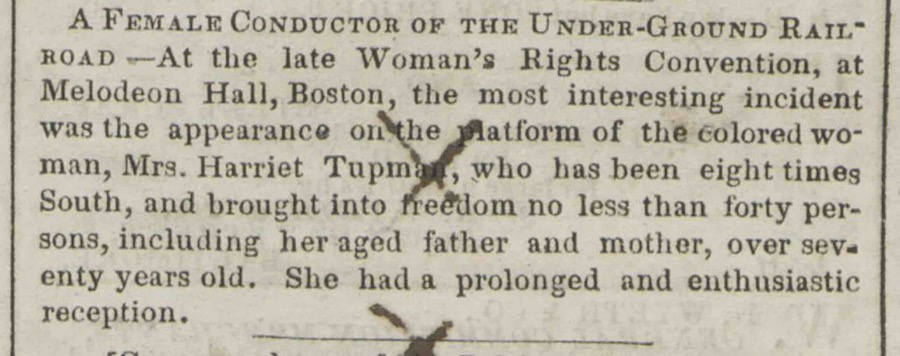
Tubman’s work on the canal and connections with the Black watermen and mariners demonstrate how enslaved work provided Tubman with not just physical skills and knowledge about the physical environment, but also knowledge about cultural, social, and political events and ideas.
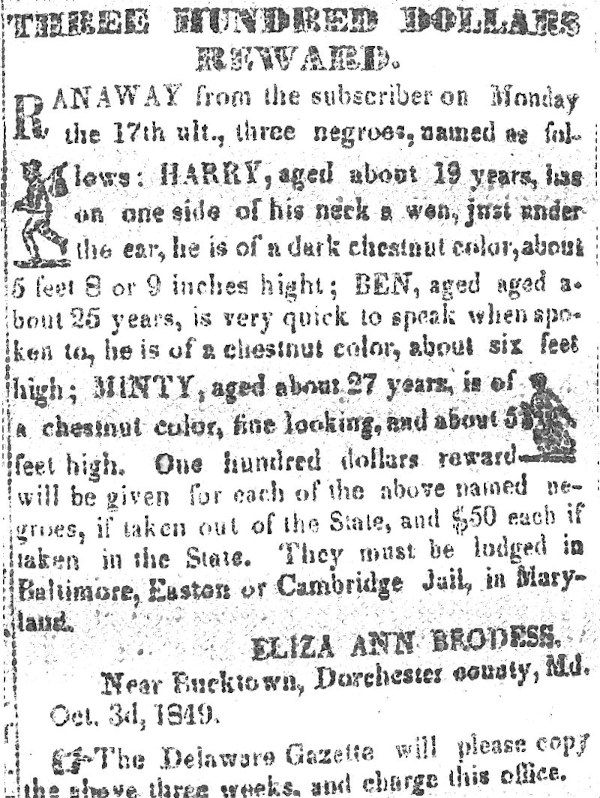
For example, Tubman organized for enslaved people to leave on Saturday nights because the newspapers were not printed on Sundays so a runaway ad could not be taken out until Monday providing a further cover for runaways. She also started a few rescue missions by meeting in cemeteries, as those were the most deserted places in the evening.8
Above: Notice published in the Cambridge Democrat (1849), offering a reward for the return of Harriet Tubman and her two brothers. Source: Virginia Commonwealth University Libraries, Social Welfare History Project.
Ranger Angela Crenshaw [0:53]
Chris Haley [0:44]
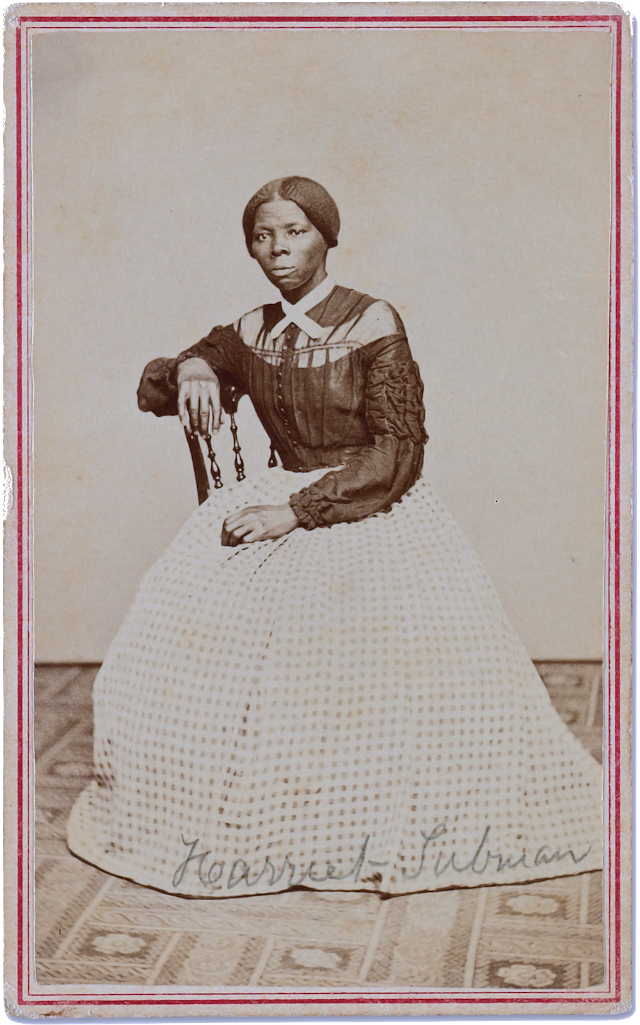
Forest development in the antebellum era was typically an exclusively male world, so Tubman had to navigate discreetly gathering information away from the eyes of the overseer and also the fact that she was one of the only women present.9 Being one of the few women working for the canal company must have shown Tubman how the natural and built environment was gendered, and that her identity as an African American enslaved woman caused others to view her differently than an African American man or white woman.
Harriet Tubman age 43-46, circa 1866-1868. Source: The Library of Congress and the National Museum of African American History
Of course, like all enslaved people searching for freedom, she also faced barriers from the environment such as icy and harsh winters, lack of foot protection, thorny thickets of grass, etc.10
Ranger Angela Crenshaw [1:01]
Harriet Tubman faced a huge number of pressures, obstacles, and traumatic experiences from the inhumane ways of slavery and the physical environment. But she drew upon the skills she built up during slavery, which included the physical landscape and natural environment, in order to help others escape from slavery.
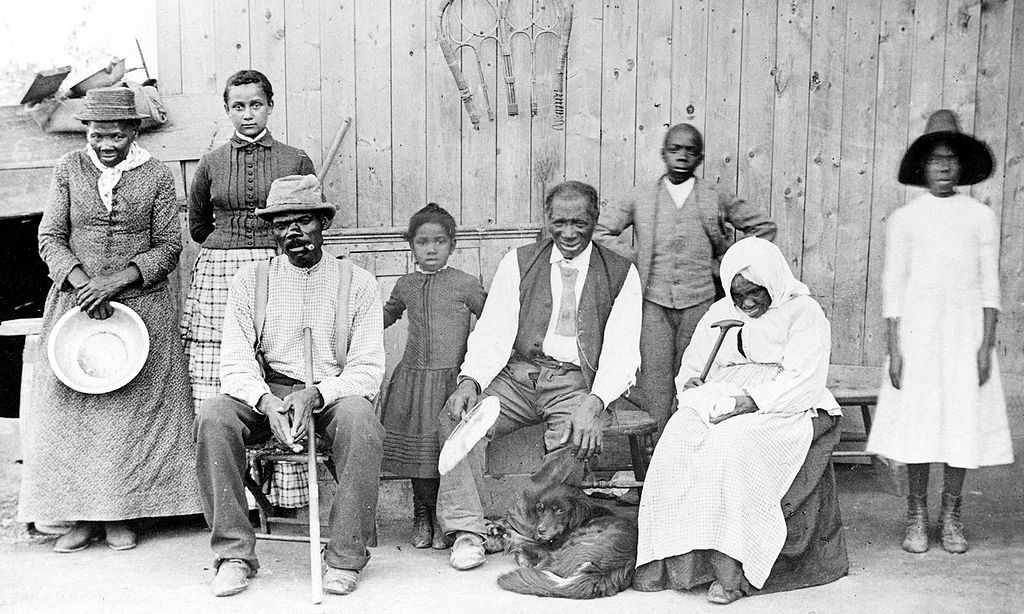
She later inspired John Brown and eventually helped him plan Harper’s Ferry in 1859, served as a spy and nurse for the Union side during the Civil War, and led a raid across the Combahee River that freed hundreds of enslaved people.
Harriet Tubman’s descendants Pauline Copes Johnson and Rita Daniels [0:53]
Tubman achieved a number of extraordinary things by using, adapting, manipulating, and traversing her natural surroundings. She was an expert rescuer in part because she was an expert naturalist.
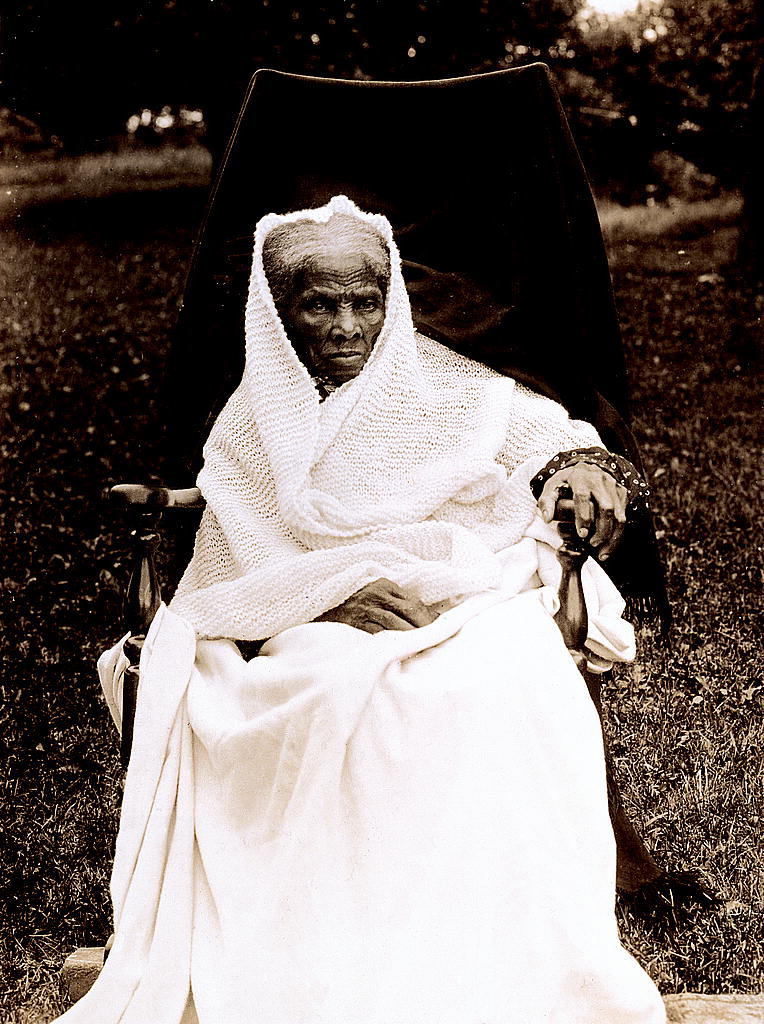
6 Benjamin Drew, A North-Side View of Slavery. The Refugee: Or the Narratives of Fugitive Slaves in Canada. Related by Themselves, with an Account of the History and Condition of the Colored Population of Upper Canada (Boston: John P. Jewett and Company, 1856), 30, https://docsouth.unc.edu/neh/drew/drew.html
7 Learn more about Harriet’s relationship with John Tubman at allthatsinteresting.com/john-tubman
8 Kate Clifford Larson, Bound for the Promised Land: Harriet Tubman: Portrait of an American Hero (New York: Random House, 2004), 117.
9 Larson, 84.
10 Larson, 119.
Cite this page › Chicago Style
Brannan, Laura. “Tubman: ‘Raised like a neglected weed’.” The Enslaved Naturalist. John Mitchell, Jr. Program for History, Justice, & Race: Digital Museum. November 1, 2021. [this-url]